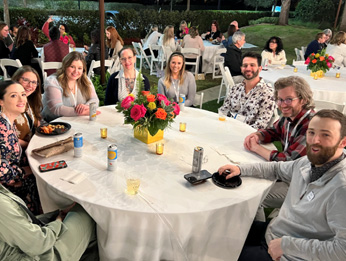
In the constantly changing world of audiology, how do you establish yourself as a leader? The modern practice looks completely different than it did decades ago, and motivating a winning team requires a refined leadership style.
By knowing what a modern organization looks like and embracing the skills required to succeed, you can become the audiology leader of tomorrow.
Traditional Organizations vs. Modern Organizations
Throughout the years, leadership and organizational structures have moved from a top-down structure to one of more equality and accountability. The top-down structure could be visualized as a pyramid, whereas the new structure can be visualized as a flat surface. They don’t just look different, the shift to a modern-day organizational structure has completely changed company culture and work environments.
The traditional top-down structure tends to reward time served, instead of true merit. It’s a system of “paying your dues” and can often lead to unclear goals, poor attitudes, and discipline silos. The way these structures operate can stifle innovation and true teamwork. Staff is often treated as a resource, and their contribution is not valued. A flat organization environment, however, empowers its employees and appreciates different way of doing things. These organizations anticipate problems and opportunities and become proactive instead or reactive.
A state-of-the-art organization is one that has a flexible organizational structure with clear roles and responsibilities. These practices are fully transparent with their mission, goals, and approach. Today’s organizations provide more opportunities for peer networking and create a sense of shared community. A meeting in this structure is place where all employees feel like they can be heard, learn from one another, and ask for help when needed, as opposed to one-sided directing.
Modern Leadership Skills
The most successful business leaders of today tend to exhibit similar traits and skills. You’ve probably noticed that the major decision makers come across as outgoing, organized, innovative, and optimistic. Much of their success, however, comes from the emotional intelligence and how they interact with those around them. They are steadfast on their core values and establish them with the organization. They learn how to communicate effectively and adapt to the needs of their staff. Here are some of the qualities that set modern leaders apart from the rest:
Fostering Trust
Trust is critical within a successful organization. As a modern leader, you have to prioritize trust and foster it among your staff, which leads to trust with your patients. A trusting work environment is based on inclusion, honesty, integrity, and respect. Make it known that you value the opinions of your customers and colleagues. Some of the ways you can promote trust with your organization include:
- Being present and available
- Going out of your way to help customers and colleagues
- Empowering your staff to make decisions and suggest changes
- Establish two-way communication
- Be flexible and consider other opinions
- Keep your word and deliver on expectations
Having Team Spirit and a Can-Do Attitude
Today’s hearing healthcare leader is a team player. You work together with your staff and colleagues to reach your ambitious goals. You support one another’s growth and development and celebrate each other’s successes.
In addition to being a team player, a can-do attitude puts you in a better position as a leader. This mindset keeps you open, motivated, and ready to step in when needed. It helps to maintain this attitude when you surround yourself with people who you aspire to be more like and who hold the same values as you. When you run into something new, focus on asking how to accomplish the goal instead of the reasons you cannot. Remember that even your easiest patient was once a challenge, and you can tackle more difficult cases.
Creating Innovative Solutions
Long-term success requires creative and innovative ideas. As a leader, you should constantly be challenging yourself to make improvements and find new, value-adding solutions. We are all curious to share ideas and insights to increase our collective success. Part of being a team player means receiving ideas from different perspectives and positions, so there’s a large opportunity to be innovative when you keep an open mind. Whether someone is brand new to the field, or has decades of experience, you can find value in their ideas. Sometimes you need to kickstart innovative thinking by challenging your team to think about creative ways in which you might differentiate yourself from competitors.
Evaluating Your Leadership
Being an effective leader for the future means constantly evaluating yourself and looking for ways to improve. Without self-reflection, you become stagnant and will not evolve enough to keep up with the hearing healthcare industry. These are some questions to regularly ask yourself to evaluate your leadership skills:
- Have I provided my team with the necessary tools and resources to do their jobs?
- Are the right processes, structure, and guidelines in place?
- Has effective training been provided?
- Have goals and expectations been clearly communicated?
- Do I hold myself and my team accountable?
- Do I provide effective feedback?
- Is my team properly motivated?
- How am I recognizing and rewarding my staff?
Establishing Values and Culture
The future of leadership places a large emphasis on employee engagement and retention in order to influence positive organizational outcomes. An engaged workplace is one with an interconnected culture that defines each person’s responsibilities and ensures their understanding of how their behaviors impact both their co-workers and the patient experience. For example, if front office personnel take detailed notes about the patient, it becomes very useful for the provider and allows them to be more thorough. Eventually, this turns into a positive patient experience. A positive contributor will get noticed and drive those around them to be better. On the other hand, a negative contributor will become a distraction and put a strain on others. It’s meaningful for everyone to feel empowered to take part in the process. You create a sustainable organization with redundancies and are no longer held hostage by an employee who seems to be the only one who holds certain knowledge.
When it comes to leading a positive and engaged culture, there are a few areas you need to give special attention to:
Building a Team
To build your best team, you have to consider your long-term goals and plans. Instead of strictly hiring for your immediate needs, hire for more transferable skills that can be developed as time goes on. You should also look to build a diverse team of different personalities and backgrounds to ensure you have a wide variety of ideas.
Coaching and Developing
A good leader recognizes that when individuals can grow and learn, it supports the entire team. To build an environment where people want to stay, you need to invest in their futures. Establishing a regular coaching schedule and a well-defined pathway for development is crucial. For employees to develop, you need to clearly articulate your expectations and regularly evaluate where they feel like they are progressing. Your team should know that coaching and development will lead to measurable performance improvement. You also need to have your team understand what each other does and have some sort of cross-training available.
Transparency
Having open and honest communication within an organization leads to a positive culture and helps foster trust among your team. There should be a clear definition of what is important to share and update with the entire team, and with certain coworkers. Employees should also feel like they know exactly what your goals are, how your vision is developing, and have an understanding of your “why.” Each day, your staff should walk in knowing what needs to be accomplished that day, and how it feeds into the larger mission. Regular, brief meetings to share updates and make proactive adjustments are great for improving transparency.
As audiology continues to change, it’s important to position yourself as a strong leader that can take your organization through ups and downs. Leaving the old ways behind and embracing new skills and styles will keep you at the forefront of the industry and lead your practice to thrive.










